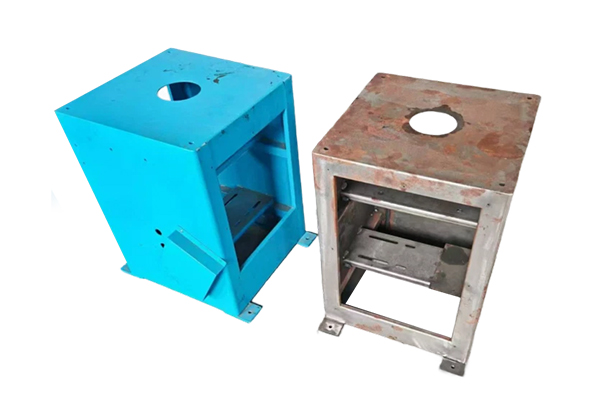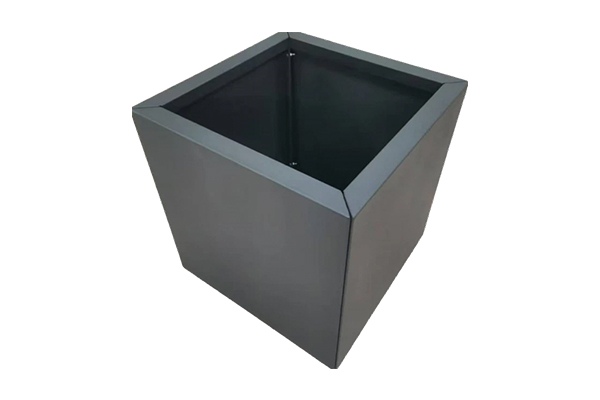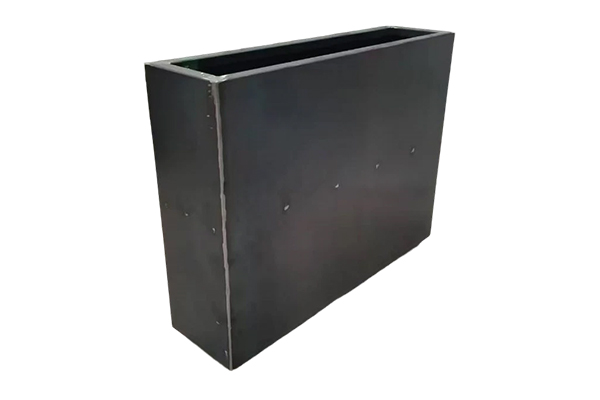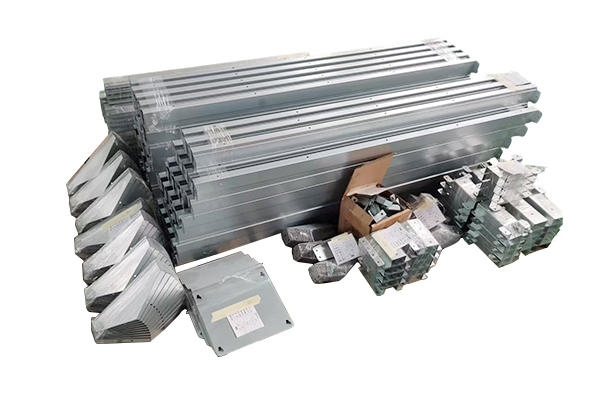How do heat pump equipment cabinets achieve a dynamic balance between efficient heat dissipation and condensation prevention?
Release Time : 2025-08-18
During heat pump equipment operation, the cabinet integrates numerous key components, including the compressor, electronic control system, inverter, and sensors. These components generate significant heat during operation. Efficient heat dissipation is essential to ensure long-term, stable system operation. However, improper heat dissipation, particularly in environments with large temperature swings between day and night or high humidity, can easily lead to another problem: condensation. Water vapor condenses on cold metal surfaces, potentially causing short circuits, component corrosion, or insulation degradation, seriously threatening equipment safety. Therefore, achieving a dynamic balance between efficient heat dissipation and condensation prevention is a core technical challenge in heat pump cabinet design.
The key to achieving this balance lies in accurate sensing and intelligent control of the cabinet's internal and external environments. Modern heat pump cabinets are typically equipped with temperature and humidity sensors that monitor internal air conditions in real time. When the system detects a temperature rise requiring heat dissipation, it activates cooling mechanisms, such as activating ventilation fans or heat exchangers. However, unlike traditional, simple exhaust methods, advanced cooling strategies don't simply draw in cool air from outside. Instead, they employ indirect cooling or air circulation to prevent hot, humid air from directly contacting cold surfaces. For example, closed cooling loops or heat pipes are used to transfer internal heat to heat sinks outside the cabinet, where it is then released to the surrounding air through natural convection or forced air cooling. This effectively dissipates heat while preventing the intrusion of humid air from outside.
In high-humidity environments, the dew point of the air inside the cabinet is high. Once the temperature falls below this point, condensation will occur. To address this, cabinet design must avoid "cold bridges," where metal components running through the inside and outside create cold zones due to rapid heat transfer. Using insulating materials to isolate fasteners, brackets, and other areas can effectively reduce the occurrence of these cold spots. Furthermore, internal airflow must be rationally planned to ensure even flow of hot air and avoid high-risk condensation areas in corners or behind equipment.
Another effective approach is to implement intelligent heating and dehumidification mechanisms. When sensors detect that humidity is approaching the condensation threshold, the control system automatically activates low-power heating elements or a built-in dehumidification module, slightly raising the local temperature or reducing the air's moisture content, thereby keeping relative humidity within a safe range. This heating does not raise the overall temperature, but rather precisely intervenes to prevent condensation on surfaces. It consumes minimal energy and does not impact overall system efficiency. This function is particularly important at night or during downtime, when the equipment is idle and the internal temperature drops rapidly, making condensation most likely to occur.
In addition, the cabinet's sealing design plays a crucial role. A high-protection-level seal effectively blocks the ingress of humid air, but a completely sealed structure can lead to heat accumulation. Therefore, high-end heat pump cabinets often utilize "breather" or "intelligent micro-ventilation" technology, allowing for minimal air exchange to equalize pressure while simultaneously blocking water molecules through a waterproof, breathable membrane, achieving a "breathable, water-resistant" effect. This material allows water vapor to diffuse slowly while preventing the direct ingress of liquid water and high-humidity air, mitigating the risk of condensation at the source.
The choice of material also influences the balance between heat dissipation and condensation prevention. Using hydrophilic materials on the cabinet's interior can easily form a water film, exacerbating corrosion. Hydrophobic or anti-condensation coatings, on the other hand, allow condensed water vapor to quickly slide off, preventing accumulation. Furthermore, metal surface treatments such as passivation, spraying, or lamination can enhance corrosion resistance, preventing even trace amounts of condensation from causing immediate damage.
Ultimately, this dynamic balance depends on the overall coordination of the system. Heat dissipation is no longer simply about "cooling down" but rather a comprehensive thermal management strategy that integrates humidity management, airflow control, and material properties. The control system automatically switches operating modes based on environmental changes, prioritizing indirect cooling when heat dissipation is needed and activating anti-condensation protection when humidity rises, ensuring the cabinet interior remains within a safe range between excessive heat and humidity.
In summary, heat pump equipment cabinets utilize a variety of methods, including intelligent sensing, indirect heat dissipation, optimized sealing, innovative materials, and precise humidity control, to create an adaptive environmental regulation mechanism. Rather than simply choosing between heat dissipation and moisture resistance, they achieve a synergistic coexistence of both through technological integration, ensuring stable, safe, and efficient operation of the equipment in various climates.
The key to achieving this balance lies in accurate sensing and intelligent control of the cabinet's internal and external environments. Modern heat pump cabinets are typically equipped with temperature and humidity sensors that monitor internal air conditions in real time. When the system detects a temperature rise requiring heat dissipation, it activates cooling mechanisms, such as activating ventilation fans or heat exchangers. However, unlike traditional, simple exhaust methods, advanced cooling strategies don't simply draw in cool air from outside. Instead, they employ indirect cooling or air circulation to prevent hot, humid air from directly contacting cold surfaces. For example, closed cooling loops or heat pipes are used to transfer internal heat to heat sinks outside the cabinet, where it is then released to the surrounding air through natural convection or forced air cooling. This effectively dissipates heat while preventing the intrusion of humid air from outside.
In high-humidity environments, the dew point of the air inside the cabinet is high. Once the temperature falls below this point, condensation will occur. To address this, cabinet design must avoid "cold bridges," where metal components running through the inside and outside create cold zones due to rapid heat transfer. Using insulating materials to isolate fasteners, brackets, and other areas can effectively reduce the occurrence of these cold spots. Furthermore, internal airflow must be rationally planned to ensure even flow of hot air and avoid high-risk condensation areas in corners or behind equipment.
Another effective approach is to implement intelligent heating and dehumidification mechanisms. When sensors detect that humidity is approaching the condensation threshold, the control system automatically activates low-power heating elements or a built-in dehumidification module, slightly raising the local temperature or reducing the air's moisture content, thereby keeping relative humidity within a safe range. This heating does not raise the overall temperature, but rather precisely intervenes to prevent condensation on surfaces. It consumes minimal energy and does not impact overall system efficiency. This function is particularly important at night or during downtime, when the equipment is idle and the internal temperature drops rapidly, making condensation most likely to occur.
In addition, the cabinet's sealing design plays a crucial role. A high-protection-level seal effectively blocks the ingress of humid air, but a completely sealed structure can lead to heat accumulation. Therefore, high-end heat pump cabinets often utilize "breather" or "intelligent micro-ventilation" technology, allowing for minimal air exchange to equalize pressure while simultaneously blocking water molecules through a waterproof, breathable membrane, achieving a "breathable, water-resistant" effect. This material allows water vapor to diffuse slowly while preventing the direct ingress of liquid water and high-humidity air, mitigating the risk of condensation at the source.
The choice of material also influences the balance between heat dissipation and condensation prevention. Using hydrophilic materials on the cabinet's interior can easily form a water film, exacerbating corrosion. Hydrophobic or anti-condensation coatings, on the other hand, allow condensed water vapor to quickly slide off, preventing accumulation. Furthermore, metal surface treatments such as passivation, spraying, or lamination can enhance corrosion resistance, preventing even trace amounts of condensation from causing immediate damage.
Ultimately, this dynamic balance depends on the overall coordination of the system. Heat dissipation is no longer simply about "cooling down" but rather a comprehensive thermal management strategy that integrates humidity management, airflow control, and material properties. The control system automatically switches operating modes based on environmental changes, prioritizing indirect cooling when heat dissipation is needed and activating anti-condensation protection when humidity rises, ensuring the cabinet interior remains within a safe range between excessive heat and humidity.
In summary, heat pump equipment cabinets utilize a variety of methods, including intelligent sensing, indirect heat dissipation, optimized sealing, innovative materials, and precise humidity control, to create an adaptive environmental regulation mechanism. Rather than simply choosing between heat dissipation and moisture resistance, they achieve a synergistic coexistence of both through technological integration, ensuring stable, safe, and efficient operation of the equipment in various climates.







